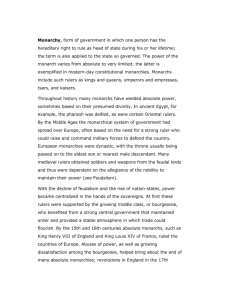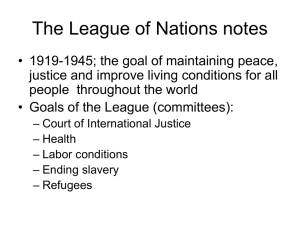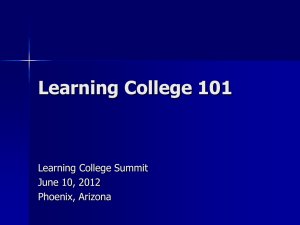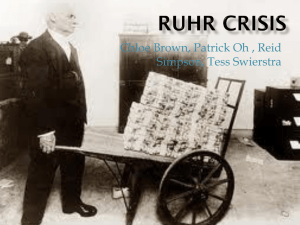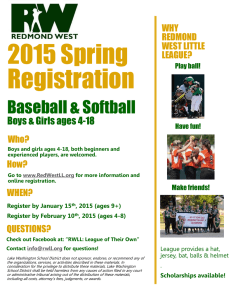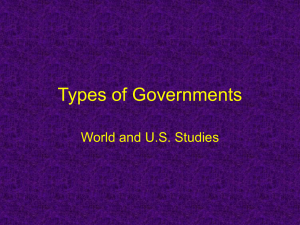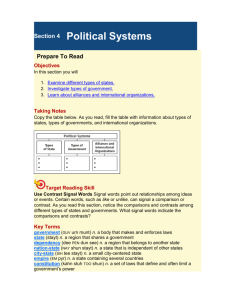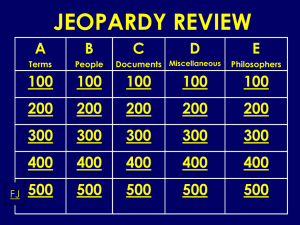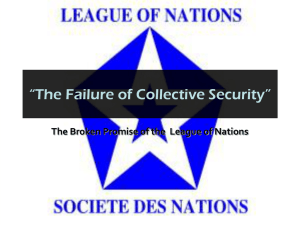PPT - OGT Terms 52-61
advertisement
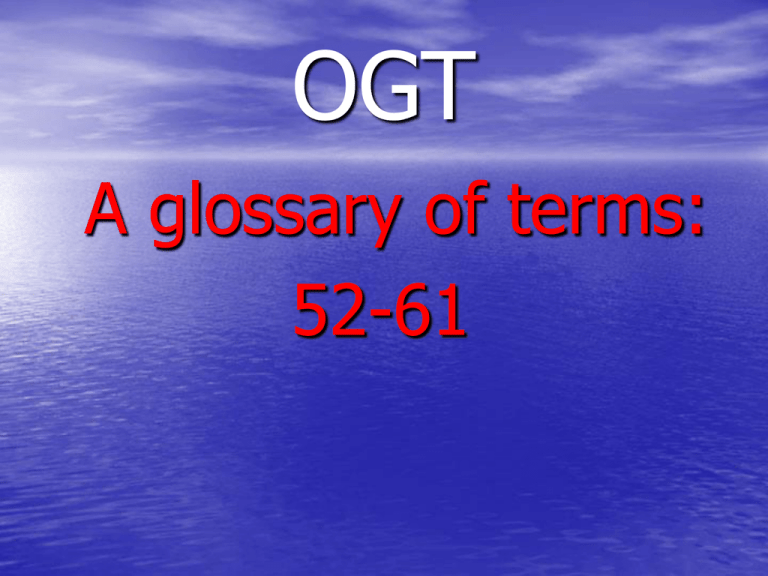
OGT A glossary of terms: 52-61 LEAGUE OF NATIONS An organization of nations set up by the Versailles Treaty to discourage aggression and prevent future wars. The League had no army and depended on the will of members to stop aggression. (46) A After World War I, the League of Nations was created to help resolve international conflicts before they led to war. What did Japan’s successful invasion of Manchuria in 1931 indicate about the ability of the League of Nations to prevent World War II? A. The League had little power to stop acts of aggression. B. The League was concerned only with disputes in Europe. C. The League’s army was unprepared for modern warfare. D. The League was led by countries with the weakest military forces. LITERACY RATE The percentage of people in a country able to read and write. (97) LOBBYIST An agent of an interest group hired to influence legislatures. (140) MARKET ECONOMY A system in which economic questions are answered by the free interaction of consumers and producers. Under this system, capital is invested in the hope of creating more wealth for the entrepreneur who risks money. Consumers are free to buy or not buy what is produced. The laws of supply and demand set prices. (115) Market Economy MARKET ECONOMY TEST QUESTION In determining what to produce, how do market economies typically respond to high consumer demand for a product? A. The government regulates the price of the product. B. Private companies increase production of the product. C. The government sets production quotas until the demand is met. D. Private companies and the government work together to reduce demand. B 2008 Test Question Economic systems answer the question of how goods and services are produced. What is one way a country could change from a command economy to a market economy? A. if the government takes control of family-owned farms B. if privately owned banks become subject to stricter regulation C. if agricultural and factory workers are required to join labor unions D. if industries that had been owned by the D government become privately owned MARSHALL PLAN U.S. economic assistance given to rebuild the economies of Western Europe after World War II. (53) McCARTHYISM The widespread suspicion of subversive Communism in America in the 1950s led by Senator Joseph McCarthy. (72) McCARTHYISM MIDDLE EAST Region of Southwest Asia and North Africa, including Saudi Arabia, Egypt, Iraq and Israel. (58) MIGRATION The movement of people from one area to another. Social, political, economic and environmental factors may lead to migration. (104) Which factor contributed to increased migration of people among regions of the United States in the second half of the 20th century? A. new restrictions on immigration from Asia B. increases in the number of small family farms C. the construction of the Interstate Highway system D. increased immigration from Northern and Western Europe C MIXED ECONOMY An economy that blends features of traditional, command and free market economies. (115) C Which statement correctly describes the role of the government in a country with a mixed economy? A. The government allows economic decisions to be made by the society’s traditions and customs. B. The government makes all decisions regarding the production and distribution of goods. C. The government makes some production and distribution decisions, but other economic decisions are made by individuals. D. The government exercises no decision making in economic matters; production and distribution are determined solely by individuals. 2009 Test Question In a certain country, all decisions concerning the production of goods and services are made by the government. However, following a political revolution, a new economic system is set up in which some decisions regarding production of goods and services are made by the government and others are made by individuals and private companies. How has the economy of this country changed? A. from a mixed economy to a market economy B. from a command economy to a mixed economy C. from a market economy to a traditional economy D. from a traditional economy to a command economy B MONARCHY A government ruled by a hereditary ruler, such as a king or queen. (133) • Absolute – People have no say in how they are governed. • Constitutional – People have a say in how they are governed – power is shared between the Crown and an Elected Legislature. Ex. England 2009 Question Which characteristic makes a constitutional monarchy different from an absolute monarchy? A. an official state religion B. the presence of a noble class C. a ruler who inherits power by birth D. laws which limit the power of the ruler D 4 point Monarchy Question Monarchies may be absolute monarchies or constitutional monarchies. • Explain how monarchs usually acquire power under both types of monarchies; • Describe what limits, if any, exist on how monarchs exercise power in both types of monarchies. Write your answer in the Answer Document. (4 points)
